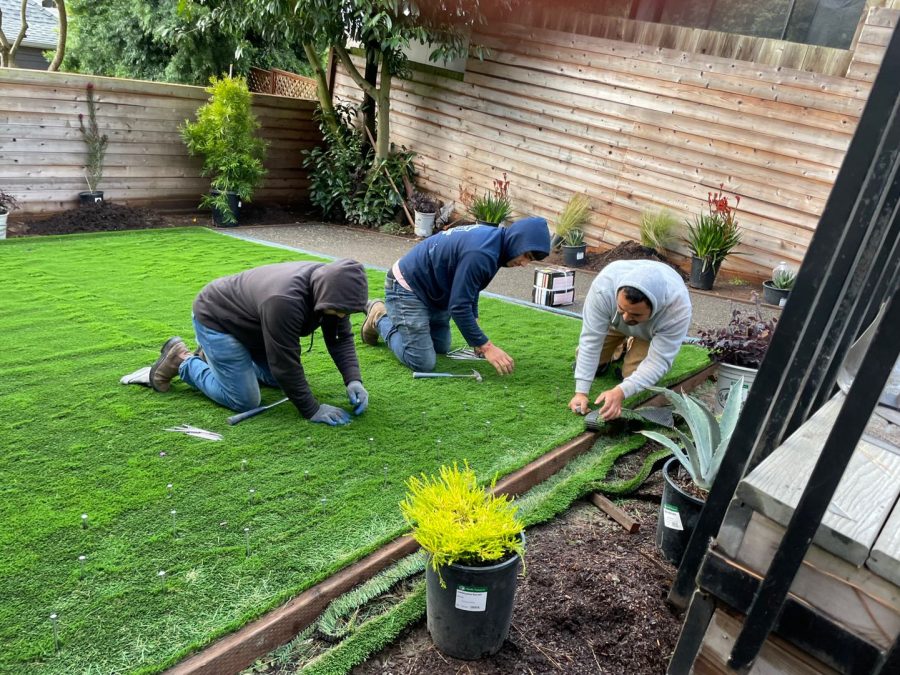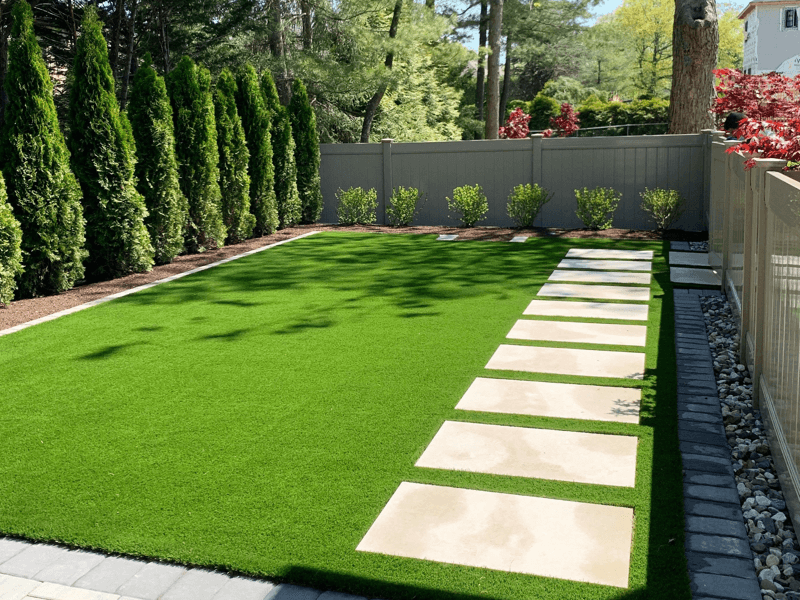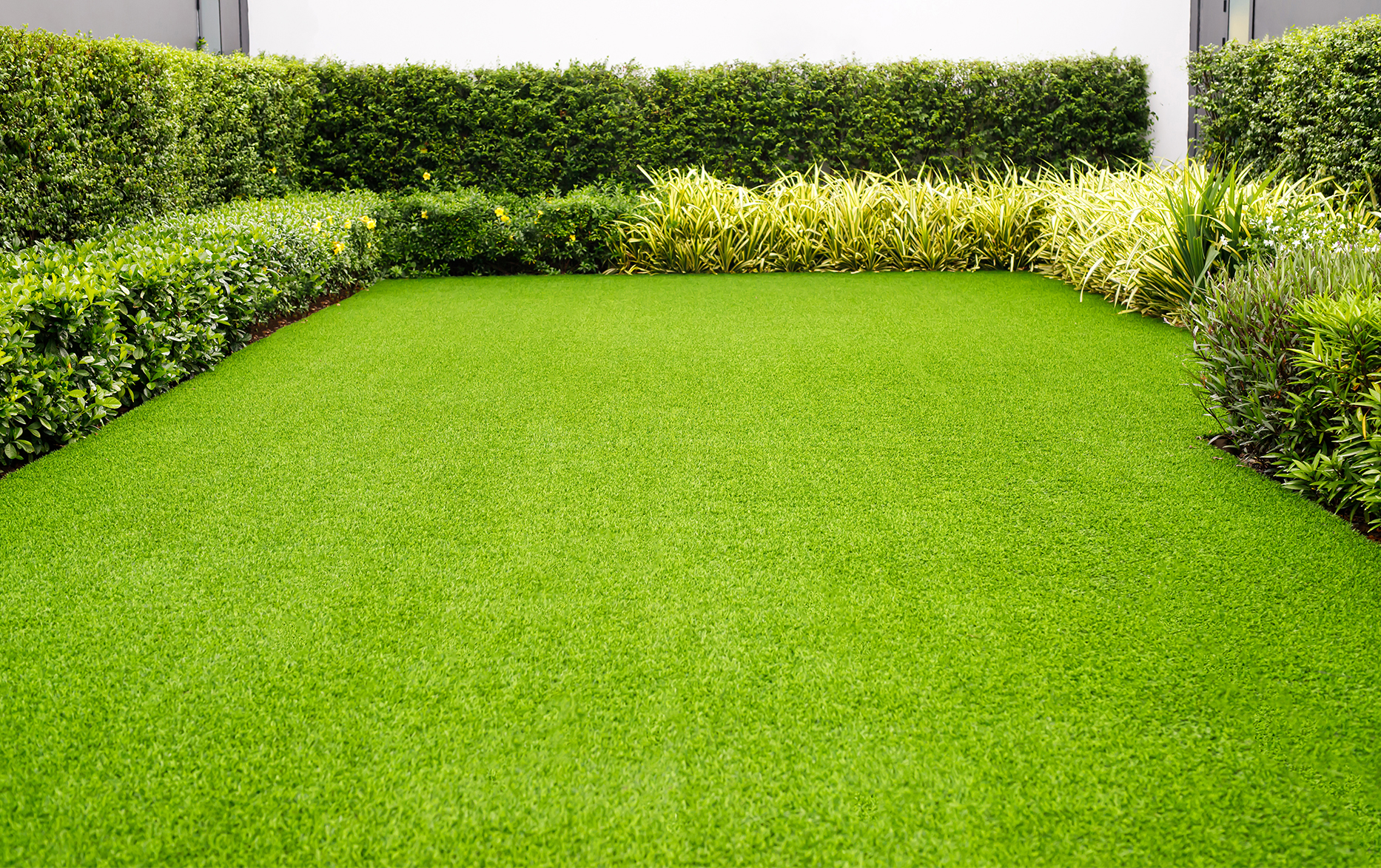Explore the Environmental Advantages of Opting for Synthetic Grass Solutions
The adoption of fabricated lawn services offers an engaging chance to attend to pressing ecological obstacles. By significantly minimizing water usage and reducing the application of hazardous chemicals, these alternatives not just promote sustainable landscaping but additionally safeguard local ecological communities. The reduced carbon impact connected with lowered maintenance activities contributes to an extra sustainable approach to land monitoring. Nonetheless, the effects of these benefits extend past simple preservation efforts, questioning regarding their long-lasting influence on habitat preservation and overall eco-friendly equilibrium. Checking out these measurements discloses an intricate interaction worth taking into consideration.
Water Preservation Benefits
Among the most substantial advantages of synthetic lawn is its capacity to preserve water. Conventional turf yards need considerable irrigation, particularly in areas prone to drought or water restrictions. On the other hand, synthetic grass does not need watering, considerably minimizing the total need for water sources. This attribute is particularly helpful in dry regions where water deficiency is a pushing issue.
By getting rid of the need for normal watering, synthetic grass contributes to sustainable landscape techniques and helps alleviate the ecological impact of excessive water intake. The preservation of water extends to the reduction of drainage, which can lead to soil disintegration and waterway air pollution.
Additionally, the installation of fabricated grass permits homeowners and communities to designate water resources a lot more efficiently, concentrating on essential uses such as drinking water and farming. The change towards man-made grass not only promotes responsible water usage however additionally aligns with broader ecological objectives focused on maintaining natural resources.
As neighborhoods increasingly prioritize sustainability, the water conservation advantages of artificial grass provide a compelling situation for its adoption in business and household landscape design projects.
Decreased Chemical Use
The transition to synthetic grass substantially lowers the reliance on chemical therapies typically used in all-natural grass upkeep. Standard grass administration commonly entails the application of herbicides, plant foods, and chemicals to promote development and control parasites. These chemicals can posture dangers to human health and wellness, local wildlife, and the setting, adding to dirt and water contamination.
In comparison, synthetic lawn gets rid of the demand for these dangerous substances. By lessening the launch of synthetic substances into the environment, fabricated grass advertises healthier soil and water systems.
In addition, the absence of chemical overflow related to synthetic grass setups helps safeguard neighborhood waterways from contamination, sustaining marine life and maintaining biodiversity. Phoenix turf companies. As neighborhoods increasingly prioritize sustainable techniques, deciding for synthetic grass offers a viable solution that lines up with environmental preservation objectives. Via this shift, property owners can delight in rich eco-friendly rooms without endangering ecological health, paving the method for a much more lasting future
Reduced Carbon Impact

In addition, the installation of synthetic grass can cause significant water preservation. Natural lawns require significant amounts of water for watering, which not just includes to the carbon impact linked with water removal and therapy yet additionally strains local water resources. In comparison, synthetic grass requires very little upkeep, requiring no watering, therefore dramatically reducing water usage and its associated energy costs.
Additionally, the longevity of synthetic grass adds to its lower carbon influence. With a life-span of approximately 15 years or even more, the requirement for frequent replacements is diminished, causing much less waste and reduced energy consumption in production and disposing of traditional grass choices. Generally, synthetic grass presents a lasting choice for ecologically conscious landscape design.
Environment Preservation
Habitat conservation is a vital consideration in the debate over landscape design options, particularly when contrasting synthetic grass to natural yard. Natural grass yards typically require extensive upkeep, including using pesticides, herbicides, and plant foods, which can negatively impact neighborhood environments. These chemicals can leach right into weblink the dirt and waterways, damaging native flora and fauna and disrupting local environments.
Artificial turf eliminates the need for hazardous chemicals, consequently securing close-by wild animals and preserving the stability of bordering environments. The setup of man-made grass can lead to the conversion of former turf areas into more biodiverse landscapes, such as pollinator gardens or indigenous plant locations, which can support regional wildlife.
Ultimately, the transition to synthetic grass not just saves water and minimizes maintenance efforts but additionally cultivates a much more harmonious relationship between human tasks and the natural surroundings, promoting environment conservation in the process.
Long-Term Sustainability
Long-lasting sustainability is an important consider evaluating check that the benefits of man-made grass over traditional yard yards. One of one of the most substantial benefits of synthetic grass is its toughness; it can last as much as 15-20 years with minimal upkeep, whereas natural yard needs frequent reseeding and substitute. This longevity lowers the requirement for constant resources, such as water, plant foods, and pesticides, which are necessary for preserving a healthy and balanced turf yard.
Furthermore, synthetic grass contributes to a decrease in carbon emissions related to lawn treatment equipment. Standard lawns commonly require gas-powered lawn mowers, trimmers, and blowers, every one of which add to air pollution. Arizona artificial turf. In contrast, synthetic grass gets rid of the demand for such devices, advertising a cleaner atmosphere
Moreover, the manufacturing of artificial grass increasingly uses recycled materials, improving its sustainability profile. As producers embrace environment-friendly practices, the ecological impact of synthetic grass proceeds to lessen.

Conclusion
The fostering of synthetic grass options offers considerable ecological benefits, including considerable water conservation, minimized reliance on harmful chemicals, and a reduced carbon footprint. Artificial lawn help in maintaining natural habitats by minimizing land disruption and advertising lasting sustainability through the use of resilient materials. Collectively, these elements emphasize the potential of Clicking Here artificial turf to contribute positively to ecological health and use a practical choice to traditional landscape design practices in a progressively resource-conscious globe.
In contrast, synthetic grass does not require watering, substantially lowering the overall demand for water resources. By lessening the launch of artificial substances right into the ecosystem, synthetic grass advertises much healthier dirt and water systems.
Furthermore, the installation of synthetic grass can result in significant water preservation. In contrast, artificial grass requires marginal upkeep, requiring no watering, thereby considerably decreasing water usage and its connected energy costs.
